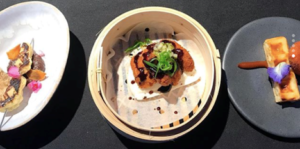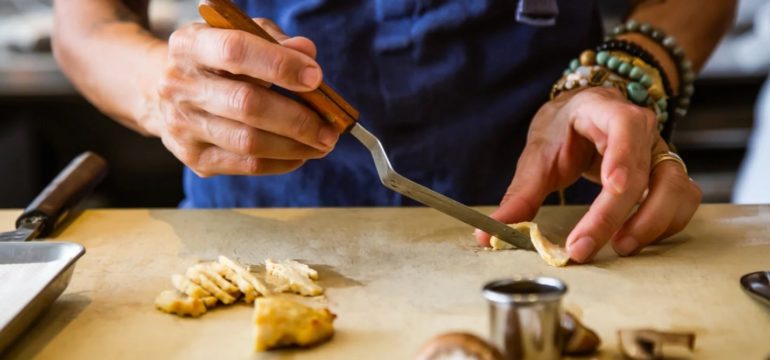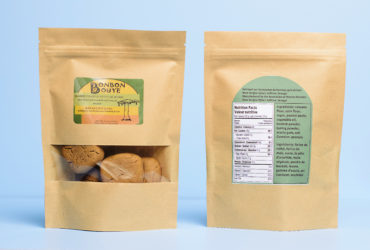“That’s one small step for lab-grown meat, one giant leap for mankind” Lab-grown meat receives clearance from FDA.
By: Wanxin “Maggie” Xu
November 16, 2022, The Food and Drug Administration (FDA) approved lab-grown meat products by UPSIDE Food after rigorous testing to ensure they are safe for human consumption. It is a big step in the lab grown meat industry and it is the joint effort of FDA, United States Department of Agriculture’s Food Safety and Inspection Service (USDA-FSIS) and the manufacturers to assure the safety and legality of lab-grown meat following the Federal Food, Drug, and Cosmetic Act (FD&C) [1].
The FDA is responsible for facility inspections and pre-market consultation in the regulating process. During the inspection, a representative of the FDA is expected to be on site to monitor the whole manufacturing process from beginning to end. What’s more, they plan to perform another inspection when the company launches the commercial product to have a better understanding on potential safety hazards [1]. Pre-market consultation is a process that assesses the food safety of lab grown meat before it is put on the market. The developers collaborate with the FDA and advise them of the concerns they should be aware of to make ensure the manufacturing complies with the standard of the FD&C’s requirements [1].
There are four main checkpoints identified during the manufacturing process: cell collection, cell line and bank, differentiation, and harvest. The FDA has jurisdiction and regulates the first three processes, while the USDA-FSIS takes over regulation of harvesting and labeling [1]. During the cell collection process, sampled cells are collected either from adult chickens destined for human consumption or mid-stage fertilized chicken eggs. Some potential risks include sourcing the incorrect animal and pathogen contamination from either the outside environment or an animal’s compromised health condition. Therefore, the FDA will review the method of cell isolation and identification and test to ensure pathogens are present [1].
Cell line and bank is when the sampled cells are screened, grown to a larger quantity, and stored for later use. UPSIDE screens the cells based on the following criteria:
- The capacity to grow repeatedly while maintaining a stable phenotype.
- The capacity to differentiate into muscle (myoblasts) or connective tissue (fibroblasts) cells.
- The capacity to grow in suspension medium without the need for surface attachment (Because the growth would take place in a tank full of cultured media).
- The ability to grow on solid substrates afterwards and form an intact muscle product.
Other than potential pathogen contamination, some unintended genetic change might occur due to the multiplication. Therefore, UPSIDE would use technology like PCR to confirm the stability of the genetics, and the FDA would examine the company’s quality control procedure including identifying the cell, monitoring pathogen contamination and assessing cell development [1].
A certain amount of cells are pulled from the cell bank and put into a bioreactor to multiple into muscle tissue with nutrients supplied during the differentiation stage. Noting that the cells are placed in a small vessel with cultured media at the beginning, after few rounds of cell division, the cells will be transferred to a larger vessel. This process is called passaging and is either done under sterile conditions or single-use food grade vessels can be employed, with the cultured media constantly under agitation to make sure the cells are suspended homogeneously [1].

Figure 1: Passaging process [2]
Finally, when the cells are grown to the expected density, they are harvested from the sealed vessel. The regulatory oversight passed from FDA to USDA in examining the composition, potential residue and contaminants would be assessed. The facilities also need to get a USDA inspection grant and adhere to USDA-FSIS regulations, for example, setting sanitation standards and putting into place HACCP (Hazard Analysis and Critical Control Points) systems [1].
The goal is to regulate human food made from cultivating animal cells based on the existing regulation set for traditionally produced meat. The Federal Meat Inspection Act (FMIA), if the animal is cattle, or the Poultry Products Inspection Act (PPIA), if it is poultry, governs the slaughter and processing of farm animals in the originating jurisdiction. In this case, the farmed meat must also adhere to FMIA and PPIA regulations [1].
What’s next
After the regulatory party approves the sale, the lab-grown meat industry is still surrounded by unanswered questions. For example, consumers’ willingness to try this product is unclear, considering consumers’ past resistance to other food technological advances like genetically modified foods. Affordability can be another concern while the industry is still exploring ways to scale up production [4].
According to UPSIDE Foods, the chicken would first be available in Michelin’s three-star restaurant, Atelier Crenn, before moving on to grocery stores [4]. Similarly, when Singapore become the first nation that authorizes the sale of lab-grown meat, US-based lab-grown meat startup Eat Just also sold its lab-grown chicken to high-end restaurants and hotels [3].

Figure 2: Instagram user Ted Cowan posted photos of the dishes and the menu, which showed that a trio of cultured meat dishes cost S$23 [3].
We always entangle ourselves in a moral dilemma, where slaughter seems to be the one and only way to obtain meat. But as lab-grown meat becomes reality, our appetite for meat and animal welfare can finally coexist. This is a representation of how technological advancements can act to free humanity from ethical conflicts.
Reference:
[1] Center for Food Safety and Applied Nutrition. (2022, November 16). Human food made with cultured animal cells. U.S. Food and Drug Administration. Retrieved December 23, 2022, from https://www.fda.gov/food/food-ingredients-packaging/human-food-made-cultured-animal-cells
[2] Hernández Rodríguez, T., & Frahm, B. (2020). Design, Optimization, and Adaptive Control of Cell Culture Seed Trains. Methods in Molecular Biology, 2095, 251–267. https://doi.org/10.1007/978-1-0716-0191-4_14
[3] Thiagarajan, S. (2020, December 21). Lab-grown chicken meat now available at Eatery in Robertson Quay. Mothership.SG – News from Singapore, Asia and around the world. Retrieved December 23, 2022, from https://mothership.sg/2020/12/eat-just-good-meat-launch-singapore/
[4] Toeniskoetter, C. (2022, November 17). Lab-grown meat receives clearance from F.D.A. The New York Times. Retrieved December 23, 2022, from https://www.nytimes.com/2022/11/17/climate/fda-lab-grown-cultivated-meat.html
 About the Author:
About the Author:
Xanxin is currently pursuing her undergraduate degree in Food Science at the University of Guelph. Wanxin also goes by the name Maggie, because her parents met each other at Maggi seasoning sauce plant and fell in love, which set the tone for Wanxin picking Food Science as her study and career choice. Wanxin is also the President of the Food Science club at the University of Guelph, enjoying building the community of foodies and helping people know more about Food Science. Growing up in China and coming to Canada to study, Wanxin develops a strong appreciation towards different cultures. She loves traveling, making new friends and exploring local culture through the cuisine. In her free time, you can also find her juggling.






Leave a Reply